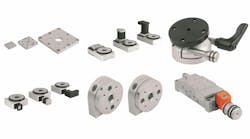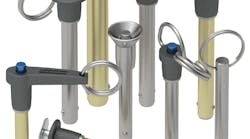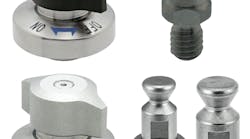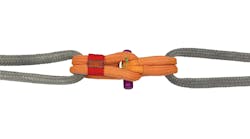Taking proactive measures to use the best concrete fastener anchor to avoid rust and corrosion will result in a significant savings of both money and time.
If the apparatus will be attached to solid concrete, then stainless steel wedge anchors are commonly purchased for the applications. When block or brick are the base material in the location, then stainless sleeve anchors can be used.
When the stainless steel wedge anchor is chosen as the fastener to solid concrete, further evaluation of an application’s atmosphere conditions is crucial. The 303 and 304 stainless steel wedge anchors are used in applications where moisture is present in the environment, which is usually a valid consideration in kitchens. The 303 and 304 stainless steel wedge anchors can resist corrosion when mild cleaning chemicals are present.
The 316 stainless steel wedge anchor is for use in applications submerged in water or harsh chemicals needed for sanitation. As a rule of thumb, the 303/304 stainless steel runs 2 to 2 1/2 times the cost of standard zinc plated carbon steel, which is used in dry, indoor atmospheres. The 316 stainless steel runs about two times the cost of 303/304 stainless steel.
Wedge Anchors
Some important characteristics of wedge anchors, used in solid concrete, are summarized below:
Sizes
- Diameters – 1/4, 5/16, 3/8, 1/2, 5/8, 3/4, 7/8, 1, and 1-1/4 in..
- Lengths – range in length from 1-3/4 to 12 in. depending on the diameter.
Hole Size
The diameter of the hole to drill in the concrete is equal to the diameter of the wedge anchor being installed.
Bit Size
The bit diameter is equal to the diameter of the stainless steel wedge anchor being installed and must meet ANSI standards.
Type of Drill
A hammer drill must be used in the hammer and rotation mode when drilling the hole in the concrete.
Packaging
When stainless steel wedge anchors are purchased, check to make sure that they will be packaged with the correct type, size and quantity of nuts and washers.
Length of Anchor to Use
Determine the minimum length of the anchor by adding the thickness of the material being fastened plus the minimum embedment for the diameter of the anchor being installed plus the space for the nut and washer.
Diameter to Use
The diameter of wedge anchor to use is determined by the amount of weight required by the particular application. The more weight that is required will mean a larger diameter of stainless steel wedge anchor should be used. The large diameter wedge anchor has better holding values for shear, and the larger the diameter then the deeper the embedment in the concrete will be to provide better pullout values.
Stainless Steel Sleeve Anchors
Stainless steel sleeve anchors, used for the application of equipment to block or brick base material, are described below:
Description:
Constructed of high quality steel parts, with every part plated with zinc and assembled into a complete ready-to-use anchor. The anchor consists of a threaded stud with an outwardly flared cone-shaped end. A tubular expander sleeve is assembled over the stud and butted against the small diameter of the cone. A washer and hex nut are then assembled on the stud to complete the anchor. The anchor works on a true expansion principle: Tightening of the nut pulls the cone-shaped stud end into the expander sleeve, wedging it outward and locking the anchor into the base material.
Approvals:
- Listed by Underwriters Laboratories (UL)
- Board of Standards and Appeals (BSA), City of NY
- Meets or exceeds U.S. Government G.S.A. Specifications FF-S-325, Group II, Type 3, Class 3
Anchor Length:
The length of the sleeve anchor should be equal to minimum embedment, plus fixture thickness, plus nut and washer. The sleeve anchor requires no maximum hole depth. The depth of the hole in the base material should be at least the length of the sleeve anchor minus the thickness of the material being fastened. This will provide some extra depth to accommodate a minor amount of concrete cuttings that may not be able to be cleaned out of hole.
Anchor Spacing:
The forces on a sleeve anchor are transferred to the material in which it is installed. If the anchors are installed too close together, it can cause an interaction of the forces, thus reducing the holding power of the anchors. The expansion anchor industry has established a minimum standard of ten anchor diameters for spacing between anchors and five anchor diameters from an unsupported edge. When vibration or sudden impacts are part of the load conditions, the spacing should be increased.
Technical Data:
Values shown are average ultimate values and are offered only as a guide and are not guaranteed. A safety factor of 4:1 or 25% is generally accepted as a safe working load. Reference should be made to applicable codes for specific working ratio.





